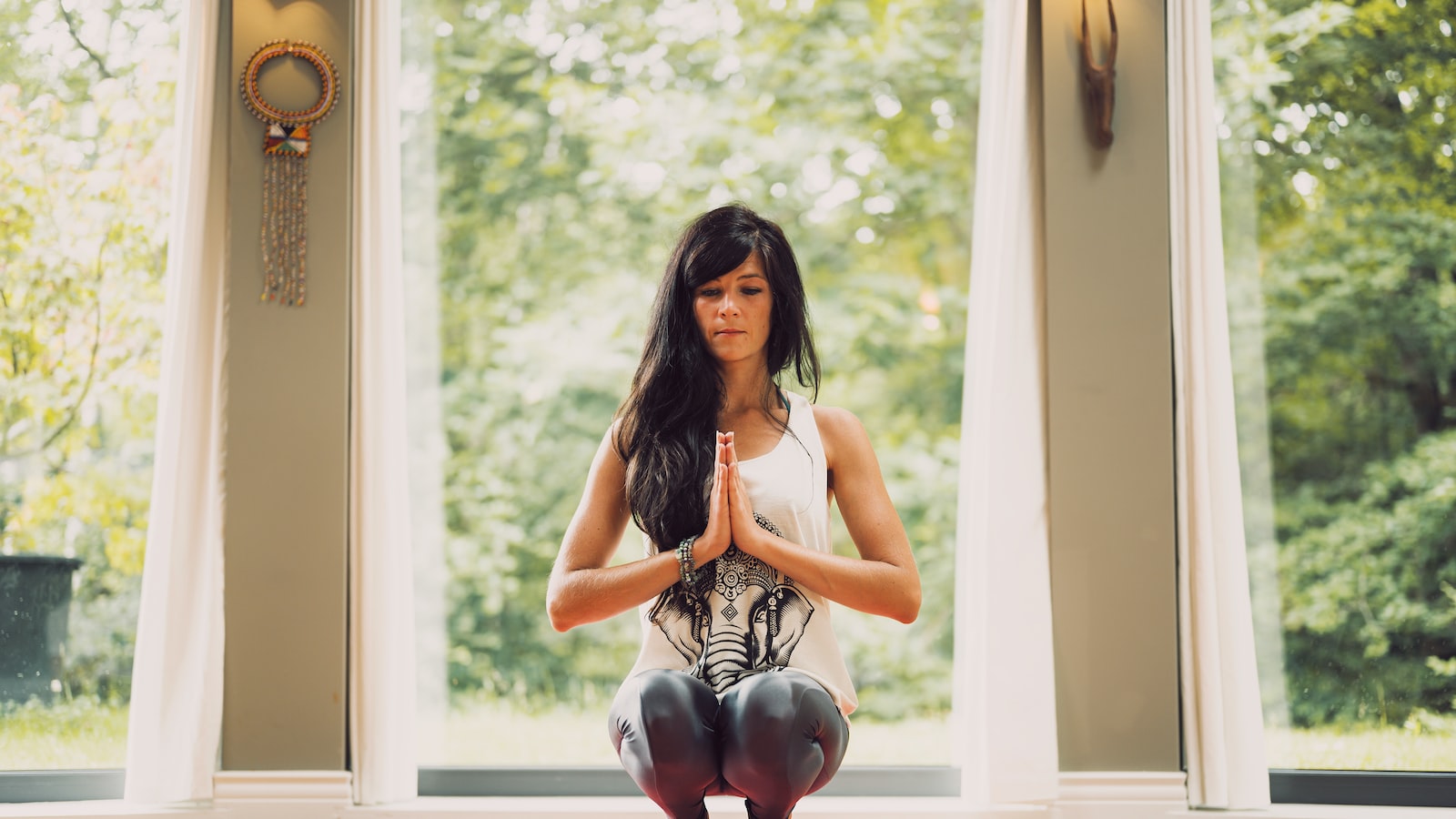
Yoga: Which Fitness Component Does it Address?
Yoga has been a popular physical activity for thousands of years, but it’s something that’s recently been gaining more and more attention from those looking to stay fit and healthy. But have you ever wondered what type of fitness component yoga actually addresses? In this article, we’ll delve into the different types of fitness addressed by yoga, and how they can help you stay fit and healthy. So if you’re looking for something to add to your fitness routine, read on to learn more about the components of fitness addressed by yoga!
List of Content
- 1. What is Yoga?
- 2. What Are the Components of Fitness?
- 3. How Does Yoga Address Each Component of Fitness?
- 4. How to Incorporate Yoga Into Your Fitness Routine
- 5. Common Benefits of Incorporating Yoga Into a Fitness Routine
- 6. Tips for Successfully Adding Yoga to Your Fitness Program
- You Ask, I answer

1. What is Yoga?
Yoga is an ancient practice that’s gaining traction in the modern world. It combines breathing exercises, physical postures, and meditation to promote relaxation, strength, and emotional wellbeing.
The physical postures of yoga are called asanas. These asanas stretch and tone muscles while increasing blood flow to the organs. There are hundreds of asanas, most of which fall into these categories:
- Standing
- Arm Balances
- Inversions
- Twists
- Seated Postures
- Backbends
The goal of yoga practice is to connect the mind and body, enhance breathing, and gain greater flexibility and strength – all of which lead to greater physical and mental wellbeing. It’s also an excellent way to increase your energy levels and reduce stress.
The breathing exercises that are part of yoga, known as pranayama, promote more efficient blood circulation. Pranayama is the practice of controlling and extending the breaths for a greater sense of calm and mental clarity.

2. What Are the Components of Fitness?
Cardiovascular: Cardiovascular fitness is essential to staying physically healthy. It includes aerobic activities like running, biking, and swimming, as well as strength training exercises such as weightlifting and calisthenics. The goal is to improve your heart’s capacity to pump more blood and oxygen throughout the body, resulting in a stronger, healthier heart.
Strength: Strength can help you become stronger and build muscles. By utilizing exercises such as weightlifting, calisthenics, and bodyweight training, you can increase the strength of your muscles, bones, and joints, making you better able to handle physical activities. It will also help with coordination, agility, and balance.
Flexibility: Flexibility is another important component of fitness. It helps you move and bend with ease and can help improve mobility, as well as protecting your joints and muscles from injury. You can increase your flexibility by doing stretching exercises such as yoga and Pilates.
Endurance: Endurance refers to the amount of time you can perform an activity without feeling too exhausted. Endurance exercises such as running, cycling, and swimming can help you build a stronger cardiovascular system and improve your stamina. It can also help with injury prevention as it reduces the risk of muscle cramps and strains.
3. How Does Yoga Address Each Component of Fitness?
Yoga can have a positive effect on all of the components of fitness. These components include your musculoskeletal system, cardiovascular system, flexibility, balance, coordination, strength, speed, and endurance. Here’s how yoga addresses each component.
Musculoskeletal System:
- Strengthens muscles, bones, and connective tissues
- Increases mobility of joints
- Reduces risk of injury
Cardiovascular System:
- Increases blood flow throughout the body
- Strengthens heart muscles
- Improves overall cardiovascular endurance
- Can be used as an aerobic exercise alternative
Flexibility:
- Improves range of motion in joints
- Loosen tense muscles
- Improves body awareness and postural alignment
Balance, Coordination, Strength, Speed, and Endurance:
- Through regular practice, poses can be held for longer amounts of time, which helps improve endurance
- Flowing between poses helps increase speed and strength
- Certain poses challenge balance and coordination
Yoga is a great way to work on all of your components of fitness. Whether you are looking to increase your strength, balance, flexibility, cardiovascular health, or endurance, yoga can help.
4. How to Incorporate Yoga Into Your Fitness Routine
1. Set Goals:
When it comes to incorporating yoga into your fitness routine, the first step is to set some short-term and long-term goals. Consider these questions:
- Do you want to improve your flexibility?
- Do you want to tone muscles or find more relaxation?
- Are you looking to learn specific postures or go deeper into a yoga practice?
Asking yourself these questions can help you decide on what type of yoga practice is best for you and your goals. This will then determine which type of yoga classes you want to take or which YouTube videos you choose for your home practice.
2. Know Your Limits:
Before beginning your yoga practice, it’s important to check in with yourself and know your limits. Don’t push yourself too hard and listen to your body. This can mean taking it slow with gentler practices like yin yoga or taking more rest when practicing with more intense flows like vinyasa. Remember that there are always modifications that you can do!
3. Make it a Priority:
When it comes to incorporating yoga into your fitness routine, you have to make yoga a priority. Just like you do for running, strength training or any other fitness activity, dedicate time for your yoga practice each day or each week. This can vary based on how long and often you practice.
4. Track Your Progress:
If you want to see progress in your yoga practice, it’s important to track it. Track your practice by logging what types of classes you took or even jotting down notes on how you personally felt. This can be helpful for setting goals and for reflecting on how far you’ve come.
5. Common Benefits of Incorporating Yoga Into a Fitness Routine
Yoga is an extremely beneficial form of exercise that can help you develop strength, stamina, and mental clarity. Incorporating yoga into your fitness routine can help you reap the following benefits:
- Improved flexibility and balance: Yoga helps you develop strength, and flexibility and by regularly practicing, you can stretch and elongate your muscles, and improve your overall balance.
- Increased circulation: With yoga poses and breathing exercises, you can improve circulation throughout the entire body. This can help you get better sleep, boost your endurance and help your muscles heal faster!
- Mental clarity: Yoga helps calm the mind and can even help reduce stress and anxiety levels. Through mindful breathing and mediation, you can become more aware and clear-headed.
- Improved posture: Incorporating yoga postures into your fitness routine can help improve your posture. Your core will be strong, your lower back will thank you, and your overall physique can become more aesthetically pleasing through proper body mechanics.
Yoga is an incredibly effective form of exercise that can help you reach your fitness goals while increasing overall wellbeing and mental clarity.
With proper form and regular practice, you can successfully incorporate yoga into your fitness routine and reap the many benefits that come with it!
6. Tips for Successfully Adding Yoga to Your Fitness Program
Consistent exercise is key for optimal health, and adding yoga to your fitness regimen allows for well-rounded physical, emotional, and mental health. Here are some helpful tips to make sure you get the most out of your yoga practice:
1. Take it Slow
Ease into the practice slowly to be sure you don’t overexert yourself. It’s okay to take breaks when you feel overwhelmed or need a rest. You can always start with less intense poses and progress towards more challenging ones as you build up strength and confidence.
2. Find the Right Yoga Class
Research yoga classes in your area to find the one that best works with your personal goals and schedules. It’s important to find an instructor who is patient and understanding so that you’re comfortable practicing. If you’re a beginner, look for a class labeled as such. Private classes are also an option if you’d like extra guidance.
3. Get Familiar with the Poses
Use photos or diagrams to get familiar with the poses before heading to class. Check out yoga tutorials online to practice beforehand. It’s also a good idea to read up on the basics so you will be familiar with yoga terms and philosophy.
4. Focus on Breath
Pay attention to your breath during each pose. Relax your body and practice taking slow, deep breaths. This will help you move from pose to pose with ease, and it will help energize you. Focusing on your breathing can also help calm your mind and allow you to stay present in your practice.
- Take it slow and ease into the practice
- Find the right yoga class for you
- Get familiar with poses
- Focus on breathing
By following these simple tips, you can start to enjoy yoga’s benefits and progress your fitness practice further than you ever imagined.
You Ask, I answer
Q: What is yoga?
A: Yoga is an ancient practice that originated in India. It is a form of physical, mental, and spiritual exercise that involves stretching and postures to improve overall wellbeing.
Q: What fitness components does yoga address?
A: Yoga helps with strength, flexibility, balance, coordination, and endurance. It also helps to reduce stress and promote relaxation.
Q: How often should I practice yoga for maximum benefits?
A: To get the most benefits from yoga, a regular practice of at least three times a week is recommended.
Q: Does yoga offer any additional benefits?
A: Yes! Practicing yoga can improve posture, mental clarity, and it can help with chronic conditions like anxiety and depression. It can also help you sleep better and increase your overall happiness and sense of well-being.
So, if you’re looking for a form of exercise that will help you with flexibility, strength, and relief of stress, yoga might just be your answer. With the various poses and techniques available, you can easily customize your practices to suit your own fitness needs. Give yoga a try and see how it can help you become a healthier and happier you!

